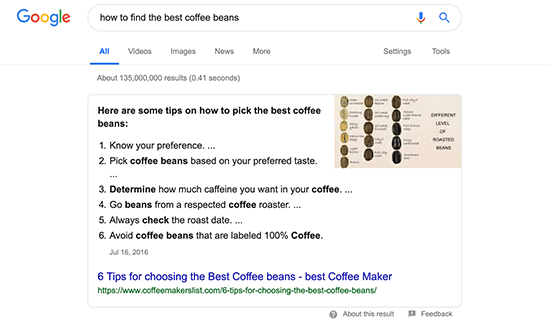preface :
This is a great question: HOW TO OPTIMIZE YOUR BLOG POSITIONS FOR SEO? Blogging for SEO is pretty much a no-brainer. Publishing classic blog posts give you the ability to target a large number of long-tail keywords, keep users of your website longer, and link to other websites.
Creating your blog and producing related content are two important steps, but you can make this work go a lot further for your SEO efforts by taking some extra steps to optimize your blog posts for SEO.
Although you should generally give priority to writing for your audience rather than for search engines, this does not mean that there are no useful steps to follow in order for your messages to go further with the engines. of research.
[lwptoc]

Online support online estimation
OPTIMIZE YOUR BLOG POSTS FOR SEO WITH FOLLOWING STEP
If you have a website, it is likely that you already understand the importance of how to optimize your post for SEO. But do you know how to optimize your blog posts to make them more user-friendly for search engines?
The truth is that many bloggers fail to take advantage of the huge marketing potential of their blogs. In fact, a recent study of blogger.com shows that even though about 60% of companies have blogs, 65% of their owners have not even updated last year! By providing fresh and relevant content and performing basic optimization of blog articles, you can take advantage of the many benefits blog offers
Here are some simple search engine optimization (SEO) tips to get you noticed.
Do your Keyword research
Keyword research should be one of the first steps in developing an SEO blog strategy, as it helps you understand the types of topics that interest your audience. For every blog post, you write, it makes sense to have the main keyword or two in mind, as well as some similar or related secondary keywords.
A keyword search is essential for page optimization. It is likely that you naturally include keywords without realizing it simply by providing valuable content on a subject. However, there is a whole range of tools and techniques to search for blog related keywords that you may not have taken into account. the Keyword builder Google Adwords and digitalers Market Kits benefits blogging offers offer great tools that allow you to search for keywords related to your topic and even spy on your competitors to see what words and phrases they target to drive traffic to their sites.

Online support online estimation
Use keywords throughout your message
https://www.hostgator.com/blog/optimize-blog-posts-seo/
http://www.openvine.com/small-business-internet-blog/6-ways-to-optimize-your-blog-posts-for-seo
Once you’ve targeted a few relevant and relevant. keywords, it’s important to place them where they will have the most impact for humans and search engine crawlers by indexing your content. Try to include them in places following :
1-title
One of the main parts of the page that search engines pay attention to when trying to understand what it’s about is the title. This makes it an important opportunity for you to communicate your topic using your main target keyword.
Make sure you include it in a way that makes sense. If you do it badly to make it confusing for your readers, the lack of clicks you will get will further compromise your SEO chances that using the keyword will not help them. But since your article will cover the subject of your keyword, finding a natural way to include it should not be too difficult.
One of the main parts of the page the search engines pay attention to the title of the page. That makes it important for you to communicate with your primary target.
The URL of the page is another important place to include your target keyword. This is another part of the search by search engines to understand how to understand the page and, as such, constitutes an important ranking factor.
Always customize the URL before publishing. A blog post on how to find good SEO for your blog, therefore, have a URL like https://avengering.com/en/how-to-optimize-your-blog-posts-for-seo/
2-Titles and subtitles
You may feel a theme here. The headers of your pages are another part of the page that search engines value in determining the subject of your page. This means that, again, you want to search for opportunities to include (naturally) your keywords in the page header. This includes anything that has a <h1>, <h2>, or <h3> tag on the page.
Headers are often a good place for the secondary keywords that you have in mind because it probably does not make sense to use your main keyword in every page header. You have to use the main target keyword in these sections.
3- Introductory sentence
The most important sentence in any article is the first one. If it doesn’t induce the reader to proceed to the second sentence, your article is dead. And if the second sentence doesn’t induce him to continue to the third sentence, it’s equally dead. Of such a progression of sentences, each tugging the reader forward until … safely hooked, a writer constructs that fateful unit: the lead.we have to use main keywords in these sections.
4-Concluding paragraph
five Effective Ways To End Your Blog Post is as below:
- Summarize the key points. Do a recap of the main message and key points you want your readers to remember.
- Ask a question. Leave them with a question to ponder — and encourage them to comment on your post. …
- Offer a challenge.
- Ask readers to share your post.
- Ask your audience how you can better serve them.
You have to use target keywords in these sections.
5-Anchor Text (text you hyperlink to other linked pages on your site)
The anchor text is the clickable text in a hyperlink. SEO best practices dictate that the anchor text is relevant to the page to which you are linking, rather than the generic text. Anchor text underlined in blue is the most common because it is the Web standard, although it is possible to change the color and underlining through the HTML code. The target main Keywords in the anchor text are one of the many signals used by search engines to determine the subject of a web page.
6-Title tags and meta descriptions
Title tags and meta-descriptions are bits of HTML code in the header of a web page. They help search engines understand the content of a page. The title tag and the meta-description of a page are usually displayed each time this page appears in the search engine results.
Well-written and compelling meta-tags can attract more users to click on your website from the search engine results. You have to use keywords in these sections.

A word of caution:
do not engage in keyword stuffing, which involves filling your content with as many keywords as it becomes difficult to read. Not only will this irritate the subscribers of your blog, but it will also penalize you from Google. A couple of keywords strategically placed will the case.

Online support online estimation
Mark Up Your Content Items
Once you have your target keywords in mind, head to Google and do some searches for them. Many types of searches now include rich results on the search engine results page (SERP).
When you use structured data to mark up content, you help Google better understand its context for display in Search, and you achieve a better distribution of your content to users from Search. You do this by marking up content properties and enabling actions where relevant. This makes it eligible for inclusion in rich results. For more information about rich results, see About Search Features. For some content types, it allows users to engage directly with your content right from Search.
This markup is also the first step to making some content eligible for lists and host-specific list previews. See Mark Up Your Lists for more details.

Optimize your images
When uploading a photo to your blog, be sure to include keywords in the file name and fill in the replacement text field with a short, keyword-rich description of the photo.
1-Start by correcting the images that appear on several pages: logo, images of sidebar/footer, etc.
2-Specify the dimensions of the image.
3-Add the width/height to the HTML of the image
4-Compress without loss of images.
5-Once registered, optimize in bulk all the images of your site
6-Configure the option to optimize the images during the download
7-Combine Images In Sprites CSS.
Reference other people with links
When you mention another blogger or article in your post, include a link to the information you are referring to. Not only is it a good tag for blogs, but you can also get lucky and get a link back. Quality links are a valuable asset for any site seeking to rank higher in search engine results pages.
Give readers the opportunity to subscribe to your blog
Include prominent RSS or RSS subscription buttons and give users the ability to subscribe to their posts by email whenever possible. This allows followers of your blog to receive instant notification of your latest posts without having to periodically check your site for new content.
Use social media to expand the reach of your blog posts
As a small business, you may be using Facebook, Twitter, Google+ or other social networking sites to connect with potential and current customers. Why not promote the content of your blog on these sites for even more visibility on the Web? Free programs like SEOSAMBA Make it easy to post links to your latest blog post on all your social media sites in a few clicks. You can even program your messages in advance!
By following these simple SEO tips, you can encourage higher rankings in SERPs, increased web traffic, and higher conversion rates.

Optimize Older Blog Posts
Historical optimization means that you optimize your old blog posts so that they are fresh, up-to-date and capable of generating increased traffic.
To start referencing, update your old messages, follow these steps:
3-Optimize for Search Intention.
Optimization 4 images.
5-Improve your article.
6-Add internal links.
conclusion
Never forget the main issue: How To Optimize Your Website For SEO? Remember that creating search engines is a permanent activity, and continuity in doing it is the most important factor. The use of the above technique, although simple, seems to be a professional and professional practice.
Too busy to follow the optimization of your blog? We have you covered. The experts in search engine optimization AVENGERING can help you better position yourself on search engine results pages.

